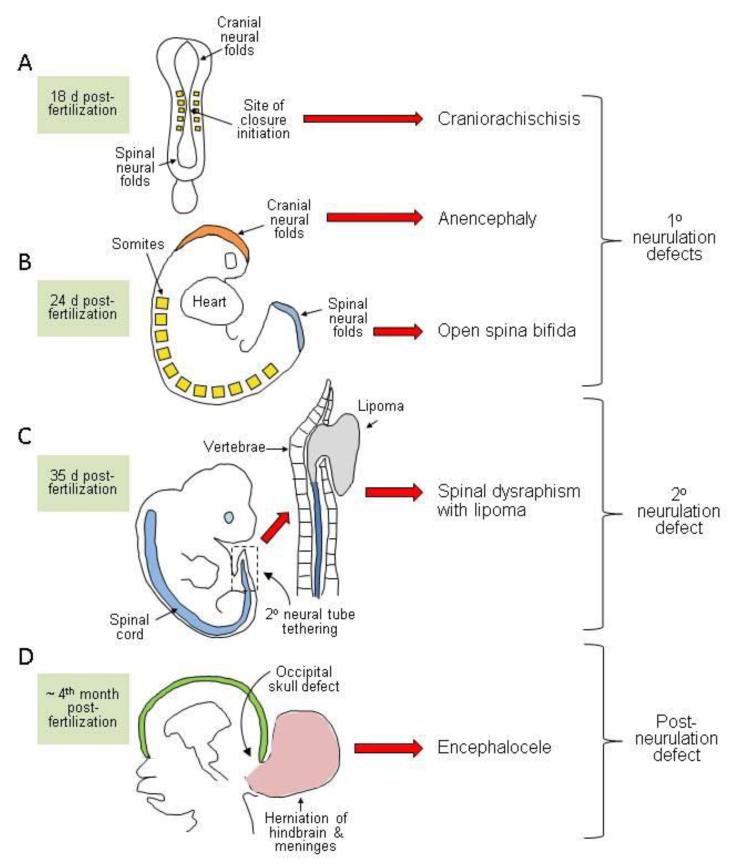Figure 1.
Diagrammatic representation of the developmental origin of malformations broadly classified as neural tube defects in humans. (a,b) Disorders of primary neurulation include craniorachischisis (a) in which the neural tube fails to initiate closure, leaving most of the brain and the entire spine open. If closure initiates successfully, then the cranial and/or spinal neural folds may fail to close (b) generating exencephaly/anencephaly and open spina bifida (myelomeningocele), respectively. (c) Disorders of secondary neurulation comprise failure of the neural tube to separate completely from adjacent tissues, resulting in tethering and diminished mobility. The spinal cord is covered by skin and often associated with fatty tissue accumulation (lipoma) through as-yet-unknown mechanisms. (d) Postneurulation defects can arise when the bony structure of the skeleton fails to develop fully. Herniation of the meninges, with or without brain tissue, through a skull defect (shown here as occipital but sometimes parietal or fronto-ethmodial) generates encephalocele, while an analogous defect in the spinal region produces meningocele.

